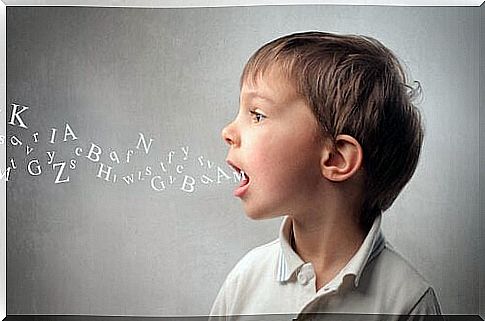Most Frequent Linguistic Errors In Children Between 3 And 6 Years

When children start speaking, they make a variety of language errors resulting from their learning process. Sometimes we get alarmed when we see that our child utters 3-word sentences that are too simple or that he hardly speaks, but this is not necessarily a problem. It is important to know when to worry and when to take these small mistakes as simple steps in their development process.
Also remember that some mistakes often happen to adults too: the famous lapsus linguae. Unintentional mistakes we make when we want to say one word but utter another or when we inadvertently exchange concepts.
This is because our thoughts sometimes don’t show up grammatically armed in our mind and, therefore, we have to go through a process of choosing the most appropriate words. Below we see the most common linguistic errors in children between 3 and 6 years old depending on the unit concerned.
Most frequent linguistic errors from 3 to 6 years
Semantic errors (lexicon and meaning)
On a semantic level, between the ages of 2 and 3 children make a lot of progress in the processes of categorization and conceptualization. In doing so they begin to produce and understand a very high number of meanings, even if they do not yet reach the level of older children or adults. Between the ages of 2 and 6, you usually learn 5 words a day. Do a little bit of the bill!

When they start using a new word, children are unaware of what its true meaning is. Little by little they learn and diminish that semantic difference thanks to their errors (trial error) and the extra-linguistic context. In other words, they refine the meaning of concepts. However, two types of linguistic errors can be made in this learning process:
- Mismatch: are those in which the child refers to something with another name. For example, call a “ball” a stuffed animal or a “car” a dog. Although they are rare, they are the result of an inadequacy between the signified and the signifier.
- Overlapping: they are more frequent than the previous ones and occur when there is a partial coincidence between the meaning that the child gives to the word and the real or the adult. These, in turn, are of two types.
- Overextensions are the most common at these ages. They arise when the child extends the meaning of a concept to things, places, or people that have traits in common. For example, when he calls all the women he interacts with “mom” or all four-legged animals “dog”.
- Sub-extensions are the opposite, that is, limitations of the semantic field of the word. They occur when the child calls “chairs” only those that are in the kitchen of his house and not all the others.
Phonological errors (sounds)
Phonological errors are linguistic errors that occur in phonemes, the smallest unit in language. Sometimes these defects affect the whole word, the syllables or just some phonemes. For example, sometimes children do not pronounce the unstressed syllables, “eat” the letters or do not pronounce the final letter of the words.
They are of various types:
- Of anticipation (suddenly lame> lame improvisation)
- Of perseverance (there is the stool> there is the stool)
- Exchange of phonemes (“dock> attack ; absolutely> in assuloto).
Some children pronounce a very limited number of phonemes, but they do it very well. Others, more intrepid, choose to try to articulate words that are beyond their abilities. In general, each child has his or her own preferences for articulation.
Morphosyntactic errors
Morphology and syntax are two basic components of the language. Children, in the development of this morphosyntactic component, usually resort to different acquisition mechanisms.
They are like parrots! They repeat everything they hear and even what they don’t have to repeat. This is why when parents pronounce phrases, sayings or linguistic formulas, they try to copy them. But they remember them as a whole, as a whole. Not word for word.
For this reason, when they proceed to imitate them and reproduce them aloud, without being aware of how they were built, they are able to say them only in the context in which they learned them. For example, if they hear their mother say to their father “How beautiful you are today”, the children will choose to reproduce those same words at home and in the same situation. They don’t generalize that formula.
Similarly, at 3 years of age a child does not know how the language system is structured. He is not familiar with grammar rules nor does he know that words are constructed based on criteria. Learn, therefore, syntactic forms independent and isolated from each other.
Over time he begins to understand that there are rules and they take them to the extreme. This is what is known as hyperregulation. Examples are “I broke”> “I broke” and “I went”> “I go”.

When should you be alarmed?
Certain language behaviors may be inappropriate for developmental age and indicate some delays in language acquisition and development. Some of them are:
- Incorrect articulation of most sounds.
- Use of isolated or very poor sentences. Use of sentences consisting of only three words or less (up to 36 months is usually normal).
- Systematic omission of verbs, prepositions, pronouns or articles in sentences.
- The vast majority of oral expressions are unintelligible and incomprehensible.
- Excessive use of gesture language to make oneself understood.
- Poor vocabulary and lexicon. Show no signs of progressive word acquisition.
However, language errors are not symptoms of a setback in the development of language skills. Far from it . They are proof that the child is progressing and beginning to understand the language system (Borregón, 2008).









